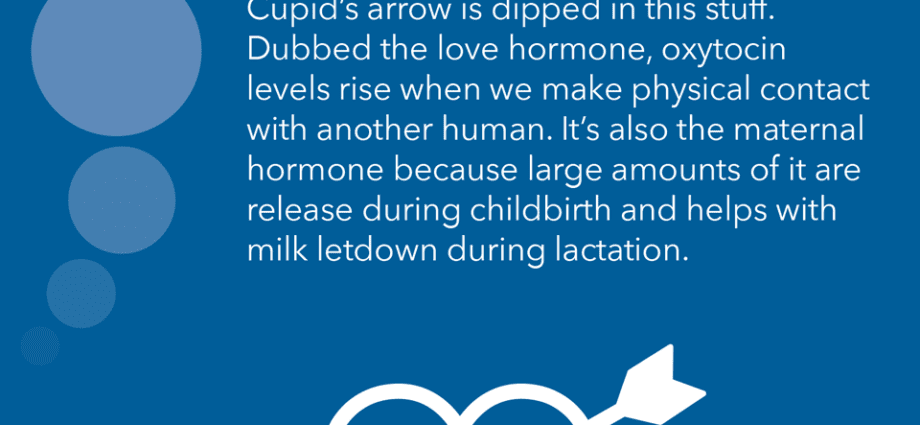Contents
What is the role of oxytocin?
Derived from a combination of amino acids, oxytocin is naturally secreted by the brain. The one we call “the hormone of happiness” has its roots in the feeling of attachment, the romantic relationship, the moments of euphoria. Before fertilization, during sexual intercourse, it participates in the ejection of sperm and helps the sperm to progress towards the egg. During pregnancy, oxytocin works behind the scenes: it helps mothers-to-be to sleep or lower their levels of the stress hormone cortisol. When the time for childbirth arrives, its rate increases: she provokes the uterine contractions and dilation of the cervix. It is no coincidence that the etymology of oxytocin, inspired by the Greek, means “rapid delivery”! It then facilitates the ejection of the placenta, then the establishment of breastfeeding.
Oxytocin injection during childbirth
“In some cases – an induction or when cervical dilation does not progress – a small dose of oxytocin in its synthetic form is given intravenously. Of course, its use is protocolized, the goal being to inject as little as possible », Explains Dr Ariane Zaique-Thouveny, obstetrician gynecologist at the Polyclinique Majorelle, ELSAN establishment in Nancy. “In the event of an induction of childbirth, this injection will take place if the cervix is favorable and therefore the mother is” ripe “for childbirth. The lower dose of oxytocin will simply allow the “engine” to kick in. and thus to have 3 contractions per period of 10 minutes. », She specifies. But oxytocin is also used at the time of delivery, to prevent the risk of bleeding after childbirth. “The injection of a measured dose of oxytocin promotes the delivery of the placenta,” she concludes. Under the effect of contractions, it allows the uterus to retract after expulsion.
What effect does oxytocin have on breastfeeding?
“Proof that oxytocin acts on contractions, it continues to cause them just after childbirth, at the time of the first feedings”, continues the specialist. If oxytocin does not directly control milk production, it mobilizes again to facilitate breastfeeding. When the newborn baby sucks on the breast, the hormone promotes the contraction of the cells that surround the alveoli of the mammary glands, prompting the milk ejection reflex.
Oxytocin, the mother-child bond hormone
Shortly after birth, the exchange between mother and child inaugurates their emotional bond. Caressed, touched, the baby develops more oxytocin receptors. The maternal voice that consoles would even be able to activate the hormone … Oxytocin is also proven to play an important role in the attachment between a mother, father and baby. When the couple takes more care of the newborn, the newborn will develop more oxytocin receptors. Even though there is no such thing as a miracle molecule, today studies have emphasized the attachment function of oxytocin. It is no coincidence that attention deficit, one of the major problems of children with autism, is improved by this key hormone.










